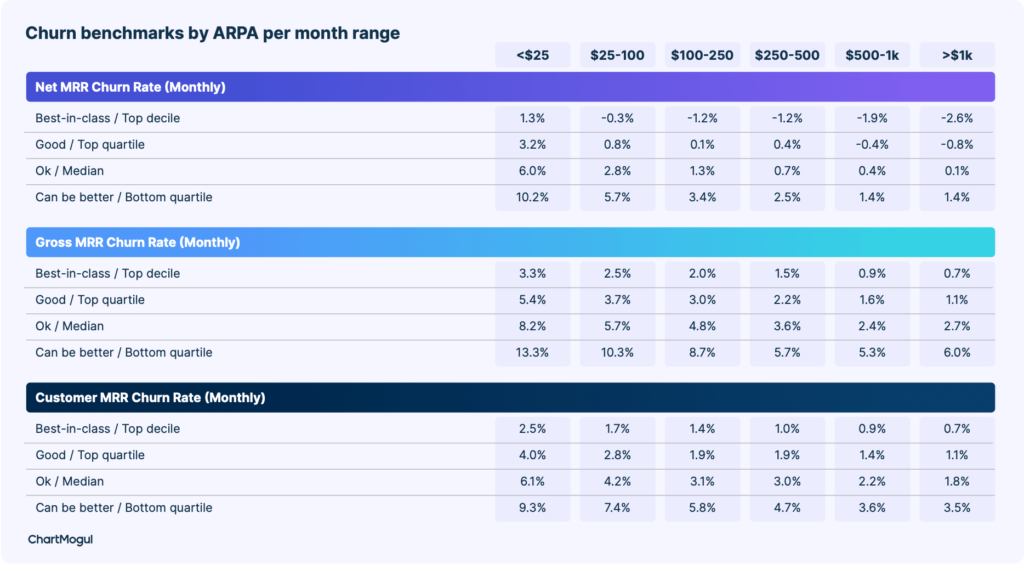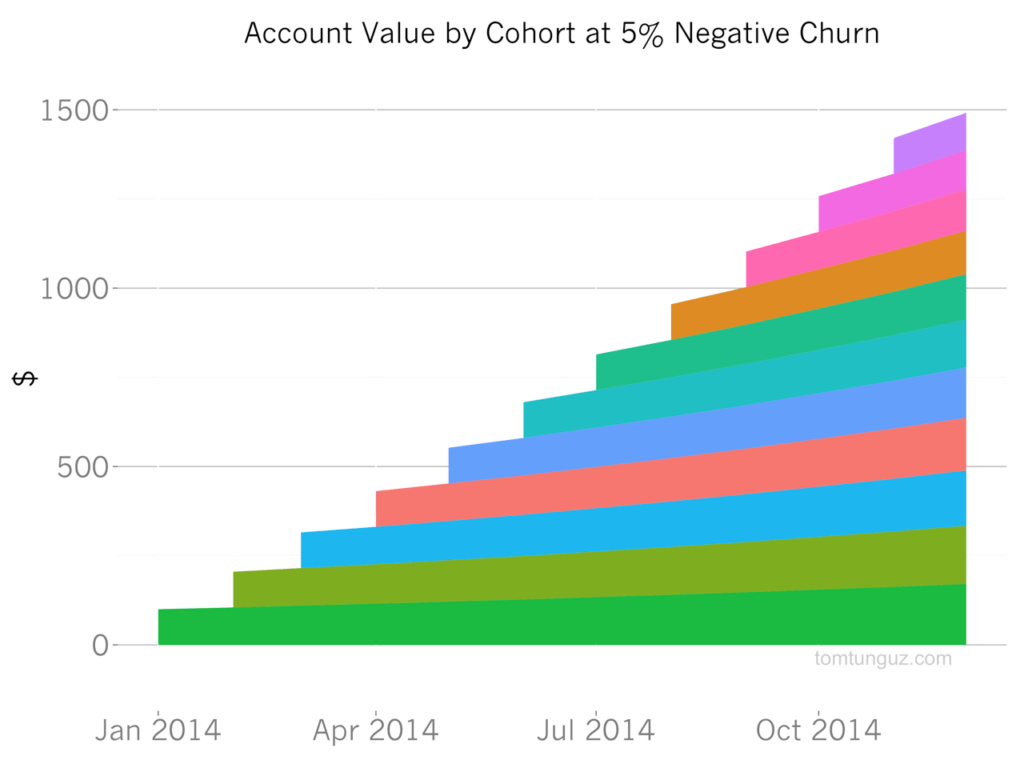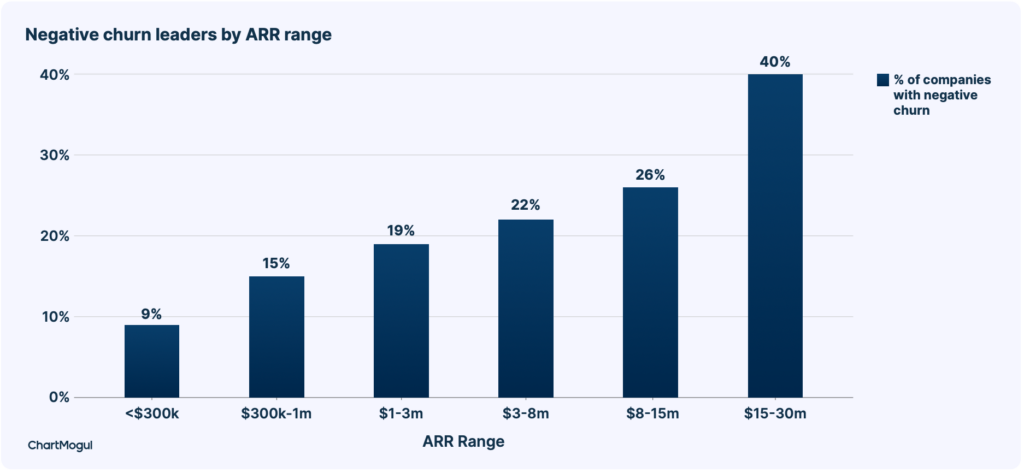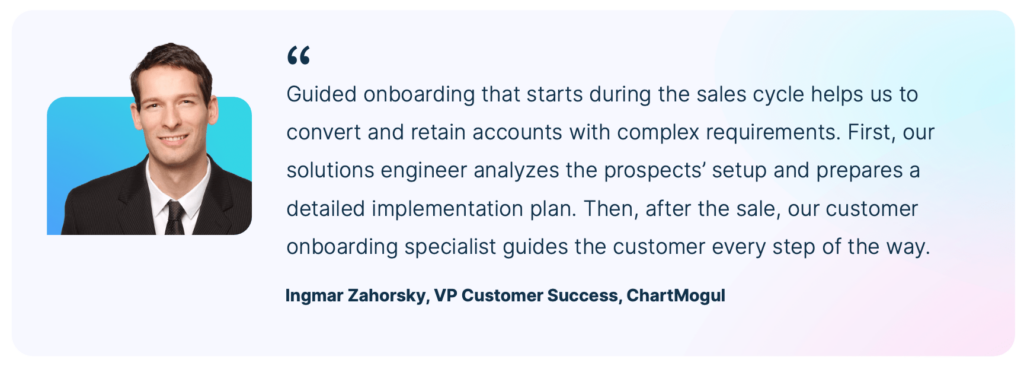Net Negative Churn in SaaS. Definition, Benchmarks & Tips

[ad_1]
Churn, SaaS companies should avoid it like the plague. It’s a silent killer! But is the term churn always bad? Say hello to negative churn, churn’s much more friendly sister metric. You won’t avoid negative churn, in fact, you should do everything in your power to achieve it. If you’re looking for positive growth, you need negative churn.
Net negative churn, or negative churn, is known as the holy grail of SaaS or “SaaS nirvana”.
Churn, in general, is a key metric and health indicator for your SaaS business. Let’s take a look at negative churn, what it is, why it’s essential, and how to achieve it. We’ll also share the latest benchmarks on negative churn among SaaS businesses.
Here are the topics we’ll cover in this post:
What is churn? A quick refresher
To understand net negative churn we need to quickly define churn and how we calculate the metric. Skip this part if you are a churn master already.
Churn is a health indicator of your existing subscriber base. In simple terms, churn is the rate at which customers or revenue is leaving your SaaS business.
At a high level, you can look at churn in two ways:
Calculating Churn:
- Customer Churn Rate = (Churned Customers) / (Customers at the start of the period)
- Gross Monthly Recurring Revenue (MRR) Churn Rate = (Churn + Contraction MRR) / (MRR at start of period)
- Net MRR Churn Rate = (Churn + Contraction MRR) – (Expansion + Reactivation MRR) / (MRR at start of period)

Understanding churn is fundamental to discussing net negative churn. If you want, you can learn more about churn basics and benchmarks on our blog.
What is net negative churn?
Simply put, negative churn is the good, and only, kind of churn you want.
Negative net Monthly Recurring Revenue (MRR) churn exists when MRR gained from existing customers from expansion and reactivation exceeds the MRR lost from churn and contraction. Putting it frankly: customers you kept add more money than customers who left subtract.
Net MRR Churn Rate = (Churn + Contraction MRR) – (Expansion & Reactivation MRR) / (MRR at start of period)

A quick example: let’s say a subscription SaaS business charges $10 a month per user seat. With 200 clients, their MRR stands at $2000. 50 clients churn, that’s $500 lost. But 20 clients add 3 user seats; adding $600 in revenue. Following the formula above:
($500 – $600) / $2000 = -0.05% Net Monthly Recurring Revenue Churn.
In this example, despite experiencing a churn of 50 clients, there was still a gain of $100 in existing client expansion revenue.
Benchmark your churn metrics against 2100+ SaaS businesses
Wondering where you stand, churn-wise, amongst your SaaS peers?
In our recent SaaS benchmarks report we analyzed data from over 2100 SaaS companies to derive insights about key metrics including churn rate. Here are two based on ARR and ARPA of SaaS companies.


How negative churn causes explosive growth
Negative churn is an indicator that your product is providing value to your ideal customer profiles and target audience.
There’s no one size fits all solution for any product—churn is inevitable. Negative churn is about providing an amazing experience to the customers your product is made for.
When you have negative churn, existing customers generate more money each month. If you’re looking at a cohort report, you should see cohorts increasing in value over time regardless of churn within that cohort.

Expansion revenue costs less than new logo acquisition. This is good news for your LTV:CAC ratio, CAC payback period, and of course LTV. Here are some more benefits:
Revenue Growth
Your business is growing its revenue base, even with some customer churn.
Our analysis showed that 40% of businesses in the $15-30m ARR range had negative churn.

Customer Retention
Your business is successfully retaining and expanding its revenue with existing customers, leading to longer customer lifecycles, reduced churn, and increased revenue stability.

Increased Customer Lifetime Value (LTV)
Satisfied and loyal customers who continue to use and expand their usage of your SaaS product contribute more revenue over their lifetime. Find out more about calculating LTV with negative churn.
Cost Efficiency
Reducing churn and expanding within the existing customer base can be more cost-effective, as it minimizes the need for extensive customer acquisition and campaigns.
Positive Market Perception
Your company’s reputation in the market is enhanced, attracting potential investors, retaining existing customers, reducing revenue churn, and serving as a competitive advantage.
How to achieve net negative revenue churn
Reduce existing customer churn
It might be obvious, but that doesn’t mean reducing churn is a simple task. The reasons for churn can be hard to find and complex. That includes UX/UI, product adoption tactics, pricing, and even things as fundamental as core product and features. If you want to achieve net negative churn there’s no way around it: reducing churn is crucial.
Facilitate expansion revenue in your pricing model
How can your business achieve negative churn? By building a pricing model that has an expansion loop within it. This is the only sustainable way to get to negative churn.
Pricing structures that expand with the customer are one way to head toward a negative churn rate. There are many ways to do this, some examples are using pricing tiers by revenue/sales, bandwidth/data usage, number of servers, or number of employees. Check out our SaaS pricing masterclass.
Up-sell and cross-sell
Make sure your existing customers are getting the most from your product. This means upgrades (that make sense for them) and seat expansion. This will all tie into your pricing strategy, what additional features will come with what price tiers, how many seats in a package, etc. Driving expansion Monthly Recurring Revenue from existing customers increases your chances of getting to a net negative churn rate.
Customer success team
If you’re not already, get serious about proactive customer success. Having a team dedicated to nurturing your customers is crucial. Your CS team are the people who will maintain relationships and make sure customers are achieving their goals with your product. Keeping an eye on product usage they will be able to tailor upsells that actually make sense to clients.

More on churn
How to Achieve Positive Growth with Negative Churn
The Last SaaS Churn Guide You’ll Ever Need to Read
This Downturn Is Different: How to Drive Retention and Mitigate Churn in 2023 (+Webinar)
[ad_2]
Source link
